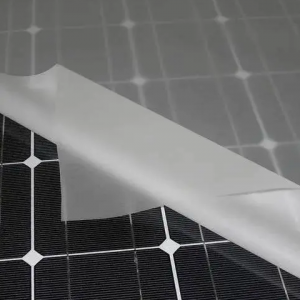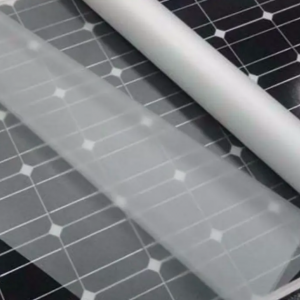Solar energy is developing rapidly as a sustainable and renewable energy source. Solar panels are a key component of solar systems and are composed of multiple layers, one of which is an EVA (ethylene vinyl acetate) film. EVA films play a key role in protecting and encapsulating the solar cells within the panels, ensuring their durability and longevity. However, not all EVA films are the same as there are different types on the market. In this article, we will explore the various types of solar EVA films and their unique properties.
1. Standard EVA film:
This is the most commonly used EVA film in solar panels. It provides excellent bonding and encapsulation properties, protecting solar cells from moisture, dust and other environmental factors. Standard EVA films have good transparency, allowing maximum sunlight penetration into the solar cell, thus optimizing energy conversion.
2. Rapid curing EVA film:
Fast-curing EVA films are designed to reduce lamination time during solar panel manufacturing. These films have shorter curing times, improving productivity and efficiency. Fast-curing EVA films also have encapsulation properties similar to standard EVA films, providing protection for solar cells.
3. Anti-PID (potentially induced degradation) EVA film:
PID is a phenomenon that affects the performance of solar panels by causing power loss. Anti-PID EVA films are specifically designed to prevent this degradation by reducing the potential difference between the solar cells and the panel frame. These films help maintain the panel's efficiency and power output over the long term.
4. Ultra-transparent EVA film:
This type of EVA film focuses on maximizing the light transmittance of the panel. By making the film more transparent, more sunlight can reach the solar cells, increasing power generation. Ultra-clear EVA film is ideal for locations with insufficient sunlight or shadow issues.
5. Anti-UV EVA film:
Solar panels are exposed to a variety of weather conditions, including strong sunlight. UV-resistant EVA film is designed to withstand prolonged exposure to UV rays without significant degradation. This ensures the longevity and performance of solar panels in harsh environmental conditions.
6. Low temperature EVA film:
In cold climates, solar panels may experience freezing temperatures, which can affect their efficiency and durability. Low-temperature EVA film is specifically developed to withstand extreme cold conditions, allowing solar panels to function optimally even in freezing temperatures.
7. Color EVA film:
While most solar panels use standard black or clear EVA films, colored EVA films are becoming increasingly popular for aesthetic reasons. These films are available in a variety of colors and can be customized to suit the design requirements of the installation site. Colored EVA film maintains the same level of protection and encapsulation as standard EVA film.
In short, choosing the appropriate EVA film for solar panels depends on the specific requirements and conditions of the installation site. Whether it's a standard EVA film for general purpose use, a fast-curing EVA film for increased efficiency, a PID-resistant EVA film to protect against degradation, or any other specialized type, manufacturers can choose the most appropriate option to meet their needs. When deciding on the type of EVA film for solar panels, required properties such as adhesion, transparency, UV resistance, and temperature resistance must be considered.
Post time: Nov-17-2023


